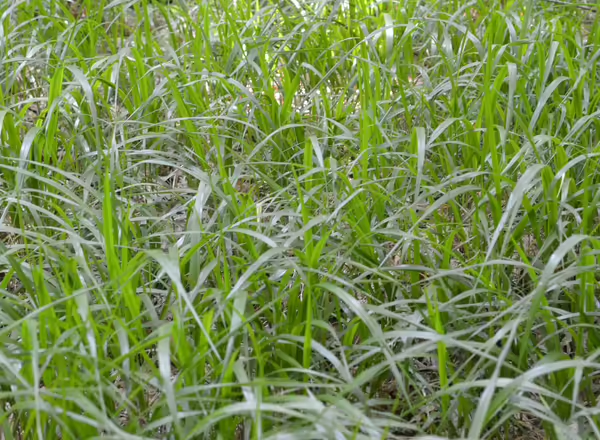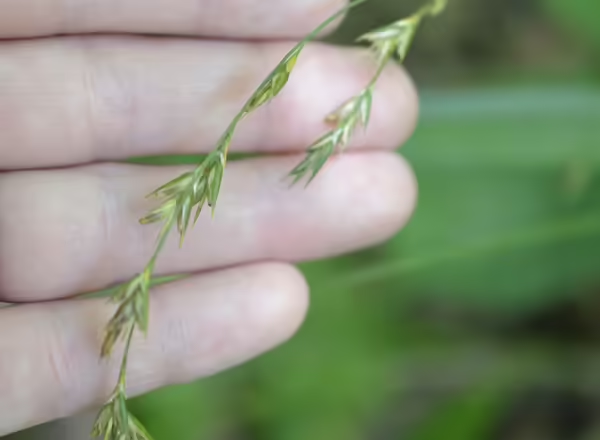A great native grass for the shade garden, Beakgrasses are native grasses that grow in forests. There are two different species of beakgrass in Illinois.
Identifying beakgrasses
The leaves of beakgrasses typically stay under a foot tall and are twisted at their bases so that they show their shiny undersides. The midrib, or vein, of the leaves is off-center.
When in bloom, beakgrasses produce a raceme inflorescence, which means the spikelets (flowering units of a grass), are grouped on small stalks that attach to the central stem. The flowering stems can grow about 1-2 feet tall. Taking a look at the spikelets reveals where the name Beakgrass came from, since the spikelets are pointed and resemble bird beaks. The spikelets turn an attractive straw to golden color in the fall.
Two species of beakgrass
There are two species of beakgrass in Illinois. This is a recent change, as one of the species used to be considered a variety of the other. Beakgrass, also called Beakgrain or Obovate Beakgrain, Diarrhena obovata, can be found throughout most counties in Illinois. American Beakgrass, also called American Beakgrain, Diarrhena americana, is restricted to a few of the southernmost counties of the Illinois and a few scattered counties in the northwest corner. The two species are quite difficult to tell apart, so we’ll just refer to them as a group.
Growing beakgrasses
The beakgrasses grow in wooded areas, preferring part shade. You should keep this in mind when planting in your home garden to try to match their preferred growing conditions. They spread through rhizomes, so you can plant several clumps and let them fill in over time. One way to do this is to plant in groups of 3 or 5 plants spaced about a foot apart, then allowing them to fill in over the next couple of years.
Need a refresher on grass identification terms, like ligule and spikelet? Check out this blog post!


